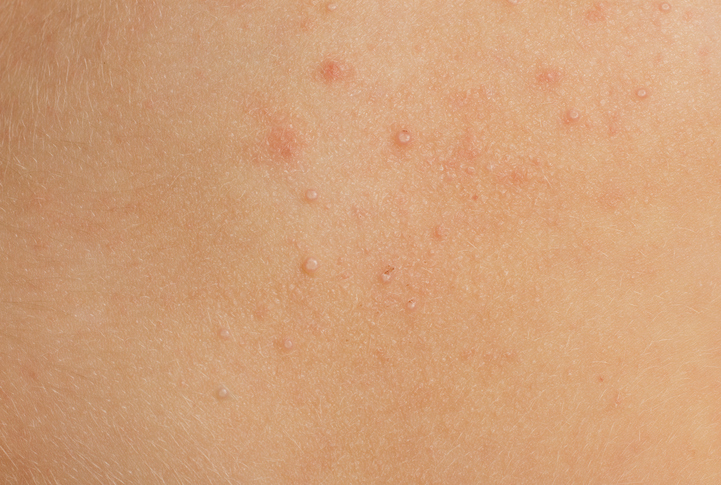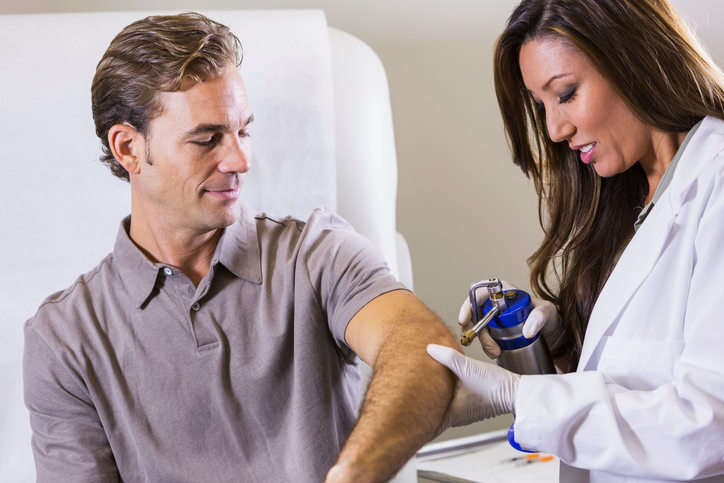Molluscum Contagiosum Treatments from U.S. Dermatology Partners
What Is Molluscum Contagiosum?
Molluscum contagiosum is a contagious skin disease that appears as pink or flesh-colored bumps on the skin. It is caused by skin-to-skin contact as well as from sharing towels, clothing or touching infected surfaces. It can also be acquired through sexual contact.
For adults, bumps are most often found on the face, neck, armpits, arms and hands. They may also appear on the genitals, abdomen and inner thighs.
Once you are infected with the virus, it can spread to other parts the body, especially if you pick or scratch at the bumps or touch other parts of your skin after touching the bumps. (This is called self-re-infection.)

Molluscum contagiosum is a contagious skin disease that appears as pink or flesh-colored bumps on the skin.
Find This Service Near You
Who Is at Risk for Molluscum Contagiosum?
It is most commonly seen in children, but people with weakened immune systems, such as individuals with HIV and cancer, also are a greater risk.
Molluscum Contagiosum Symptoms
Oftentimes, the only sign of infection are bumps on the skin. These most often occur about seven weeks after being exposed to the virus, although sometimes it may take even longer.
The bumps, which begin as small, dome-shaped growths, often feel smooth and waxy, and have a dimple in the center that may be filled with a waxy white substances. Although they are painless, they may itch and, as your body’s immune system begins to fight the infection, those bumps will turn red.
Molluscum Contagiosum Treatment

Cryotherapy is an effective means of treating molluscum contagiosum.
Treatment for adults and children differ. In children, the condition often clears on its own, although it can take 12 to 18 months. Adults who seek treatment will reduce the likelihood of spreading it to others or re-infecting themselves, and also is recommended if your immune system is compromised.
Among the treatments recommended are freezing the bumps with cryosurgery; cutterage, which cuts the bumps from the skin; laser surgery, which uses a laser to burn off the bumps; and topical therapy, which uses acids to burn and destroy the bumps.
Depending on the size and number of bumps, the procedure may need to be repeated every three to six weeks until they disappear.
Molluscum Contagiosum Prevention
If you have contracted molluscum contagiosum, the best way to prevent spreading it is to wash your hands frequently, avoid touching the bumps and cover them with a watertight bandage to keep others from coming in contact with infected skin. Don’t share any personal items like clothing, towels or hairbrushes, and avoid sexual contact if you have bumps on any area of the body that will come in contact with another person’s skin.
Contact the doctors at U.S. Dermatology Partners for more information.
*Results may vary by individual
